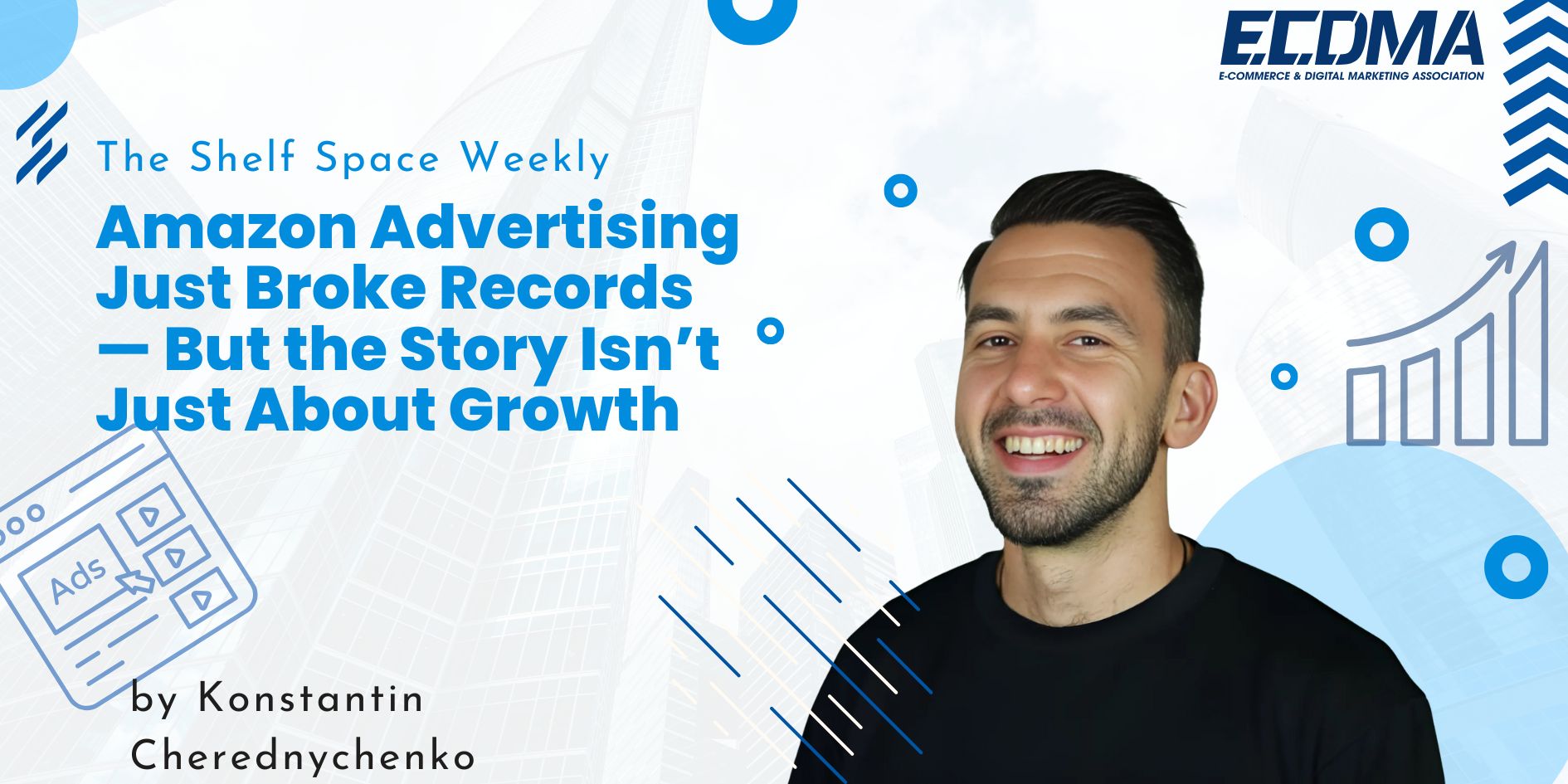
Amazon’s advertising business just hit another all-time high.
Q2 2025 ad revenue? $14.7 billion. That’s up nearly 20% year-over-year – and it’s not slowing down.
The headlines focus on the scale. But for brands operating inside the ecosystem, the more important question is: what’s driving this growth, and what does it mean for the cost of doing business on Amazon?
Amazon Ads: From “Nice to Have” to Mandatory
A decade ago, Amazon’s ad program was an optional add-on. You could still succeed organically if your product, price, and reviews were strong enough.
That era is gone.
Today, advertising isn’t just a lever for growth – it’s the toll you pay to exist on the digital shelf. Sponsored placements dominate page one. DSP retargeting follows shoppers across the web. And Sponsored Display has morphed into a mid-funnel visibility engine with vCPM pricing that rewards brand awareness, not just clicks.
The Marketplace Pulse numbers confirm what every brand operator already feels: ad spend is no longer a budget line you control – it’s a cost of survival.
Why Ad Revenue Is Climbing Faster Than Ever
From my perspective, three factors are fueling this acceleration:
- The wall-to-wall ad experience: Amazon keeps expanding inventory — video in search, Sponsored Brand placements on product detail pages, and DSP units far beyond Amazon.com. Every new format drives incremental spend.
- Rising CPCs and auction intensity: The combination of increased competition, algorithmic bid optimization, and better targeting means brands are paying more per click — even when impressions haven’t dramatically grown.
- Better tools = more spend efficiency (and volume): AMC, audience segmentation, and retail media integrations are making it easier for advertisers to justify higher budgets. The logic is simple: if you can target better and attribute more sales to ads, you can spend more with confidence.
The Brand-Side Reality
For operators, this record-setting ad revenue is a double-edged sword.
On one hand, it means the ad platform is maturing into one of the most precise performance channels in digital commerce. Amazon’s audience data is unparalleled, and when leveraged well, it can outperform search, social, and programmatic channels on ROAS.
On the other hand, it means the “cost of participation” continues to rise. Brands that don’t invest in ad strategy risk losing visibility entirely, as organic placements are pushed further down and locked behind ad gates.
And because the ads are auction-based, this isn’t a one-time adjustment — it’s an ongoing arms race. Whoever can afford to spend more (and spend smarter) wins.
Final Take: The Shelf Is More Expensive – and More Sophisticated
The record-breaking quarter for Amazon Ads isn’t a blip — it’s the new baseline. If you’re a brand, you have two choices:
- Treat advertising as a core operational function, not a marketing add-on.
- Or watch competitors with sharper targeting and deeper pockets own your category.
In other words, the cost of showing up is rising — but so is the cost of standing still.
The operators who thrive in this environment will be the ones who don’t just chase impressions, but who build full-funnel strategies that work with Amazon’s flywheel, not against it.






